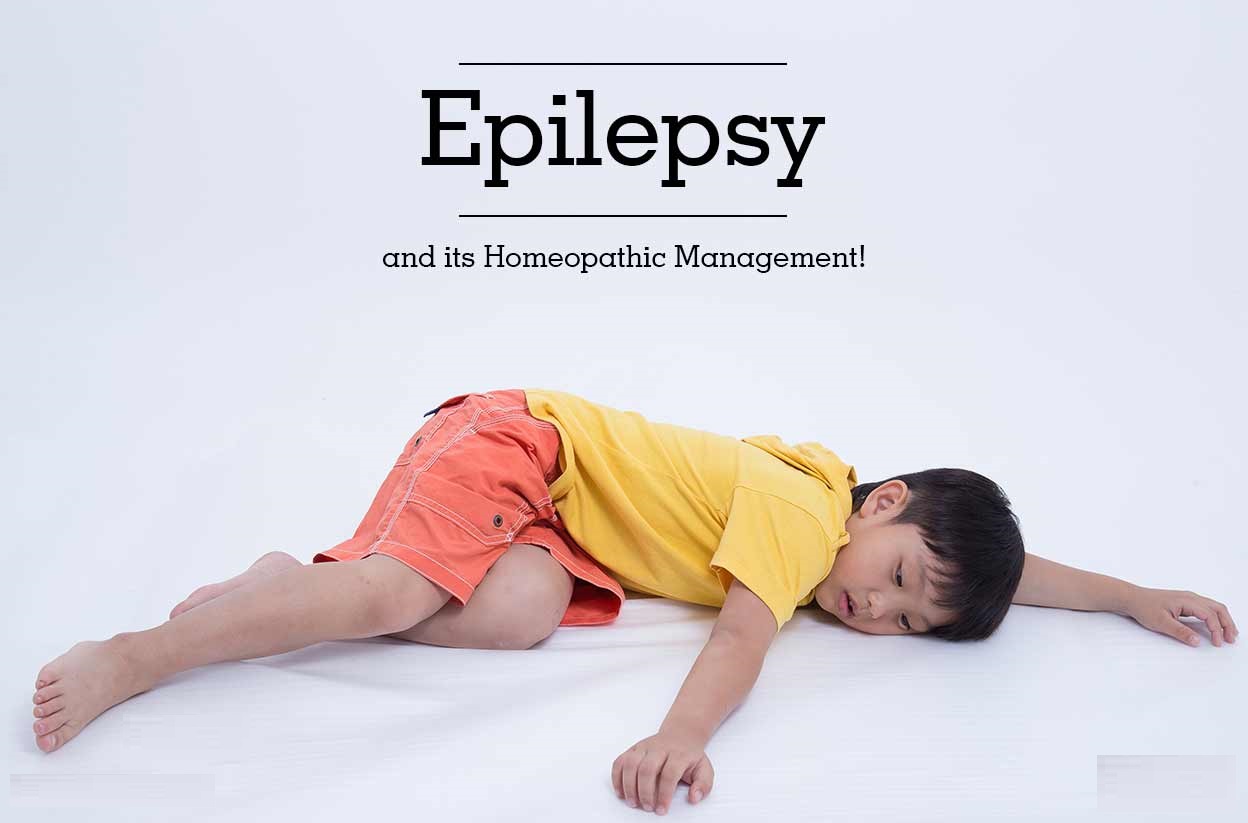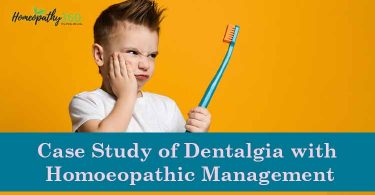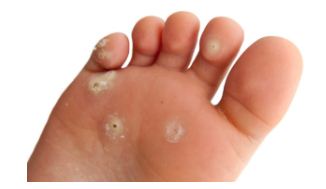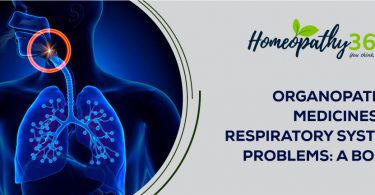
EFFECTIVENESS OF HOMOEOPATHY IN EPILEPSY: A REVIEW
ABSTRACT
Homoeopathy is an alternative therapy that has been used over 200 years. Homoeopathic remedies are used in epilepsy to offers a genuine cure in the majority of cases. The conventional approach of anti-convulsant drugs may provide a quick solution in that fits are controlled. However, such treatment can never amount to more than symptomatic control and complete control cannot be achieved. Many clinical trials and case-control studies have been published about the effectiveness of homoeopathic remedies for epilepsy. This article reviews some of this homoeopathic application in epilepsy.
KEYWORDS: Alternative therapy, epilepsy, homoeopathy, conventional approach.
INTRODUCTION
Homoeopathy is the alternative therapy that has been used over 200 years. It was presented for first time by Samuel Hahnemann (1755-1843), but its basic tents go back to Paracelsus and Hippocrates. Hahnemann worked on the treatment of malaria and found that when a healthy person used the cinchona, “a plant from which quinine was derived” symptoms of malaria appear.[1]This was the advent of treatment which is in accordance with the energetic principles of healing. In modern medicine, the symptom are the direct result of the disease and tries to suppress them but due to homoeopathic concept the symptoms are the signs of bodies effort to conquest disease and tries to reinforce and not to inhibit them. Homoeopathy has a holistic view to health and believes that every disease has basic causes that the homoeopathic remedies focus on them.
EPILEPSY: THE BACKGROUND
Epilepsy is an ancient disease, which has fascinated and frightened scientists and laymen alike. Before the working knowledge of the central nervous system, seizures were shrouded in mystery. In antiquity, this disease was accredited to gods and demonic possession, causing those with epilepsy to be feared and isolated. Epilepsy patients continued to face discrimination through the mid-20th century.
WHAT IS EPILEPSY?
Epilepsy is a group of neurological disorders characterised by recurrent epileptic seizures.[2][3] Epileptic seizures are episodes that can vary from brief and nearly undetectable periods to long periods of vigorous shaking due to abnormal electrical activity in the brain.[4]At least two unprovoked seizures are generally required for an epilepsy diagnosis. Because epilepsy is caused by abnormal activity in the brain, seizures can affect any process your brain coordinates.Epilepsy is characterized by a long-term risk of recurrent epileptic seizures. These seizures may present in several ways depending on the parts of the brain involved and the age of the person[5][6].Symptoms vary depending on the type of seizure. Generally, classification of seizures done as either focal or generalized, based on how the abnormal brain activity begins.These are as follow-
Focal seizures-Focal seizures are often preceded by certain experiences, known as auras.[7].when seizures appear to result from abnormal activity in just one area of your brain, they’re called focal (partial) seizures. These seizures fall into two categories:-
1.Focal seizures without loss of consciousness,also called as simple partial seizures, these seizures don’t cause a loss of consciousness.
2.Focal seizures with impaired awareness,also called as complex partial seizures, these seizures involve a change or loss of consciousness or awareness.
Generalized seizures-Seizures that appear to involve all areas of the brain are called generalized seizures. Six types of generalized seizures exist[8]–
1.Absence seizures, previously known as petit mal seizures,often occur in children and are characterized by staring into space or subtle body movements such as eye blinking or lip smacking.
2.Tonic seizures-Tonic seizures cause stiffening of your muscles. These seizures usually affect muscles in your back, arms and legs and may cause you to fall to the ground.
3.Atonic seizures-Atonic seizures, also known as drop seizures, cause a loss of muscle control, which may cause you to suddenly collapse or fall down.
4.Clonic seizures-Clonic seizures are associated with repeated or rhythmic, jerking muscle movements. These seizures usually affect the neck, face and arms.
5.Myoclonic seizures–Myoclonic seizures usually appear as sudden brief jerks or twitches of your arms and legs.
6.Tonic-clonic seizures–Tonic-clonic seizures, previously known as grand mal seizures, are the most dramatic type of epileptic seizure and can cause an abrupt loss of consciousness, body stiffening and shaking, and sometimes loss of bladder control or biting your tongue.
HOMOEOPATHIC APPROACH IN EPILEPSY[9]–
1.Agaricus muscarius: Seizure caused due to bad effects of sexual excess, alcohol, debauch or suppressed excess. Twitching and trembling, jerking of the whole body with chore. Delirium with constant raving. Involuntary movements while awake, ceases during sleep.
2.Argentum nitricum: The strong indications for Argentum-nit in epilepsy is that for days or hours before an attack the pupils are dilated. After the attack the patient is restless and has trembling of his hands. It is suitable in cases of epilepsy caused by fright or when they occur at the time of menstruation.
3.Artemisia vulgaris: Artemisia vulgaris is another remedy which has been successfully used for epilepsy without aura , from fright or some violent mental emotion or after masturbation, after a blow on head, where the attacks occur in rapid succession
4.Belladonna :Convulsions begin in the upper extremities and extend to the face, eyes and mouth; fits of short duration several times during the day and passing off suddenly.
5.Bufo-rana:The cause in bufo is masturbation or self-abuse. Aura begins in sexual organ. The attack usually occurs at night or during coition or at time of menses. The patient may or may not awake during the attack but when he does wake he will have violent headache. Convulsion usually followed by profound sleep.
6.Calcarea-carbonicum: The epilepsy has an aura spreading up from the solar plexus in which case the convulsions come on immediately: or it may be like a mouse running up the arm. Common causes in fright, suppressed eruptions, discharges and sexual excesses (Dr Clarke)
7.Causticum: Causticum is useful in petit mal, also when the patient falls while walking in the open air, but soon recovers. It is said to be useful when the attacks occur at new moon. Contraction of flexor tendon.
8.Cenanthe crocata: Sudden and complete loss of consciousness; swollen livid face; frothing at the mouth; dilated or irregular pupils; convulsions with locked jaws and cold extremities.
9.Cicuta-virosa: This remedy produces congestion at the base of the brain and in the medulla oblongata. At first, the patient is rigid with fixed staring eyes, bluish face, frothing at the mouth and unconsciousness.
10.Cuprum-metallicum: Convulsion here is caused by a blow on head or from getting wet. Aura begins in lower extremities and proceeds upwards. (from above downwards is cicuta ) In epilepsy calling for Cuprum we have contractions and jerking of the knees, fingers
11.Helleborus niger: During convulsion, there is automatic motion of one arm and one leg. There is extreme coldness of the body, except in head or occiput which may be hot.
12.Nux vomica: The characterising feature of epilepsy is ‘Convulsions with conciousness’.. Convulsions usually begins with slightest twitching of muscles of lower extremities and then of entire body to obtain an opisthotonus position with throwing back of head, red face and closed eyes or else protruding though in some the body is drawn sideways.)
13.Stramonium: It is an important remedy in cases of epilepsy in children. There is convulsions with consciousness (Nux vomica).They frequently wake up during night, screaming, terrified and do not recognize anyone around them.
14.Veratrum viride:The main aetiopathogenicity is congestion here. Intense congestion, almost apoplectic. Hot head, blood shot eyes, livid face. Hippocratic face. Head retracted pupils dilated, double vision. Convulsive twitching of facial muscles. Meningitis.
PREVIOUS RESEARCH TO OBSERVE EFFICACY OF HOMOEOPATHY IN EPILEPSY-
² Antiepileptic effect of Nux vomica, homeopathic remedy, against strychnine-induced seizures[10]
Objective: To investigate the antiepileptic effect of homeopathic remedy, Nux vomica, on mice and its comparison with standard therapeutic diazepam.
Methods: BALB-c mice were taken and divided into three groups comprising ten mice in each group. The first group was treated as control; the second group received standard therapeutics (diazepam, i.p.) and the third group received Nux vomica CH7. All groups were treated with strychnine intra peritoneally. Following parameters were observed; start time of convulsions, the number of animals had convulsions, and survival time until death.
Results: Nux vomica CH7 homeopathic preparation was found effective in suspending onset of convulsions (P˂ 0.01), and extending survival time until death (P˂ 0.01) in comparison to control mice. It also increased percentage survival in comparison to control as well as diazepam treated animals.
Conclusion: Our study demonstrated efficacy of Nux vomica in epilepsy management.
Key words: Nux vomica, strychnine, anticonvulsant, epilepsy.
² Clinical management of idiopathic epilepsy in dogs with homeopathic Belladonna 200C: a case series[11]
Epilepsy is an important neurological disorder in dogs. Belladonna 200C was evaluated in 10 dogs with idiopathic epilepsy. During the seizure phase, 3-4 drops of Belladonna 200C were administered orally at 15 min intervals until considerable reduction in seizure activity, then four times daily. Four dogs with head shaking syndrome in addition to seizures were given Cocculus indicus 6C, 3-4 drops orally weekly for 3 months in addition. Numbers of fits reduced to 2-3 during first 2 weeks post-therapy and then became occasional in next 2 weeks. With continuation of Belladonna therapy, no fits were observed during 2-7 months follow-up. In two cases epileptic fits reappeared within 15-25 days of cessation of therapy. Belladonna therapy was resumed and seizure control was again achieved. Owners were advised to continue the therapy at least twice daily until there were no fits for 2-3 months. Liver specific enzymes were monitored, no abnormalities were observed.
² Epilepsy in children- a mirror view from homoeopathy[12]
Every parent are concerned about their child’s health. So, when a child suffer from epileptic attack, it makes the family panic. Epileptic attacks are not easy to be treated like other illness. The chance of becoming seizure free is best in children who do not have a known cause of epilepsy, do not have a family history of epilepsy and are developmentally normal with a neurological exam and EEG. Medication which is used by the other system of medicine can itself cause more serious effects to child’s normal development. So reason out the cause and treat the child. Homoeopathy can reduce the attacks of epilepsy and can provide a normal development to the child.
CONCLUSION-
After reviewing above literature, the treatment of epilepsy with homoeopathic remedies appears to be more safe and satisfactory to the patient when compared with conventional medication, with improvement in quality of life and general health.
REFERENCES-
- Ulman D.Discovering Homoeopathy Medicine for the 21st century.California,U.S.A:North Atlantic Books;1991.
- Chang BS, Lowenstein DH (September 2003). “Epilepsy”. The New England Journal of Medicine. 349 (13): 1257–66. doi:10.1056/NEJMra022308. PMID 14507951.
- ^ Jump up to:a b c d e f Fisher RS, Acevedo C, Arzimanoglou A, Bogacz A, Cross JH, Elger CE, Engel J, Forsgren L, French JA, Glynn M, Hesdorffer DC, Lee BI, Mathern GW, Moshé SL, Perucca E, Scheffer IE, Tomson T, Watanabe M, Wiebe S (April 2014). “ILAE official report: a practical clinical definition of epilepsy” (PDF). Epilepsia. 55 (4): 475–82. doi:10.1111/epi.12550. PMID 24730690. S2CID 35958237. Archived from the original (PDF) on 9 June 2014.
- WHO. February 2016. Archived from the original on 11 March 2016. Retrieved 4 March 2016
- Duncan JS, Sander JW, Sisodiya SM, Walker MC (April 2006). “Adult epilepsy”(PDF). Lancet. 367 (9516): 1087–1100. doi:10.1016/S0140-6736(06)68477-8. PMID 16581409. S2CID 7361318. Archived from the original (PDF) on 24 March 2013. Retrieved 10 January 2012.
- ^ Jump up to:a b c d e f g h i j k l m n o p q r s t u National Clinical Guideline Centre (January 2012). The Epilepsies: The diagnosis and management of the epilepsies in adults and children in primary and secondary care (PDF). National Institute for Health and Clinical Excellence. pp. 21–28. Archived (PDF) from the original on 16 December 2013.
- Shearer P. “Seizures and Status Epilepticus: Diagnosis and Management in the Emergency Department”. Emergency Medicine Practice. Archived from the original on 30 December 2010
- National Clinical Guideline Centre (January 2012). The Epilepsies: The diagnosis and management of the epilepsies in adults and children in primary and secondary care(PDF). National Institute for Health and Clinical Excellence. pp. 119–129. Archived (PDF)from the original on 16 December 2013.
- William Boericke. Pocket manual of homoeopathic material medica and repertory. low priced edition New delhi; Jain Publishers(P) Ltd.2016.
- Anjana Goel,Aditya Saxena,Ashok kumar bhatia.Antiepileptic Effect of Nux vomica,Homoeopathic remedy,Against Strychnine-Induced seizures.january201810,2,245-248.
- JP Varshney.Clinical management of idiopathic epilepsy in dog with homoeopathic Belladonna 200C.2007 Jan;96(1):46-8.
- Team homeopathy360.Epilepsy in children-A mirror view from Homoeopathy.
About Author:
NEHA PANCHAL
MD(REPERTORY) HOM.(STUDENT)
Sri Gurunanak Dev Homoeopathic
Medical College and Hospital





